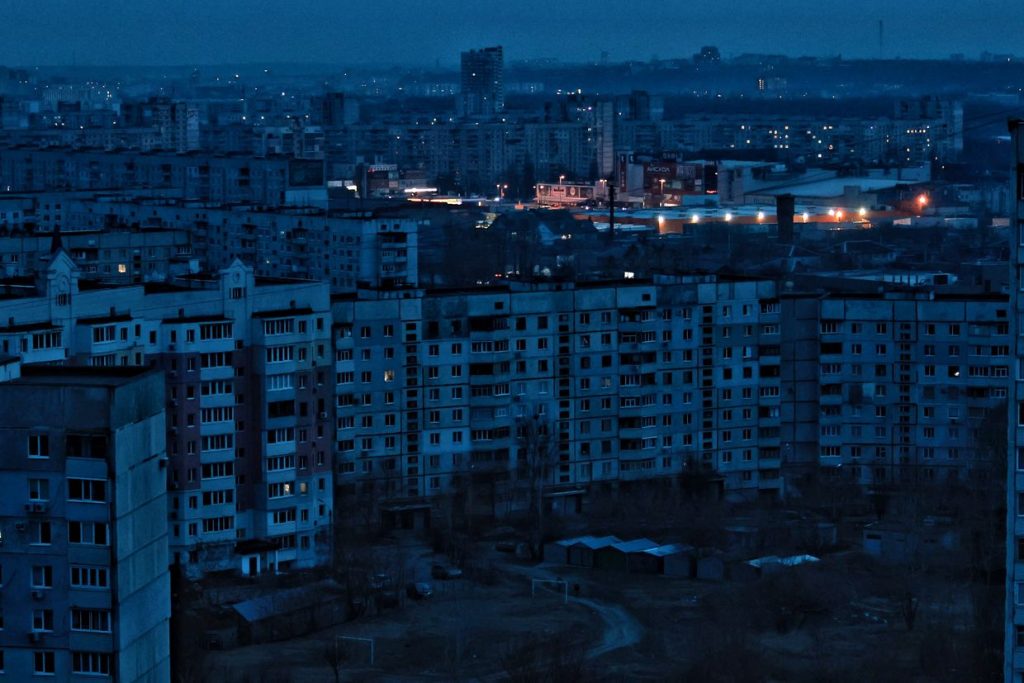The city of Kharkiv in Ukraine has been severely impacted by Russian attacks, with the destruction of almost all of its energy infrastructure. This includes a thermal power plant and all electrical substations, making the current situation for the energy industry in the city extremely difficult. Despite these challenges, Mayor Ihor Terekhov remains optimistic and emphasizes that the city will survive these tough times. Russian attacks have also targeted other key energy facilities in Ukraine, such as the Zmiiv thermal power plant and several hydroelectric power plants. The destruction of critical infrastructure has led to widespread disruptions and challenges for residents in Kharkiv.
Russian forces have reportedly used five Zircon hypersonic missiles against Kyiv, adding to the devastation caused by ongoing missile strikes in the region. Ukrainian military authorities have reported downing over 180 missiles and drones targeted at the capital city. While Russia’s use of advanced missile technology poses a significant threat, Ukrainian forces have been able to defend against these attacks and are urging Western allies to provide additional air defense systems to enhance their capabilities. The Zircon hypersonic missile, which can travel at nine times the speed of sound, is the latest weapon in Russia’s arsenal, further escalating the conflict in Ukraine. Despite the challenges posed by these advanced weapons, Ukraine’s Armed Forces have successfully intercepted thousands of Russian missiles since the invasion began.
The Institute for the Study of War (ISW) has identified potential areas where Russia may focus its offensive against Ukraine, highlighting western Donetsk Oblast as a likely target. The area near Avdiivka, a key front-line city captured by Russia in February, is considered a priority for potential Russian attacks. Recent clashes between Ukrainian and Russian forces near Avdiivka have underscored the volatility of the situation in this region. Despite facing significant challenges, Ukrainian forces have demonstrated their ability to defend against large-scale assaults and achieve battlefield success when properly equipped. The ISW report suggests that Russia’s operational limitations may force them to focus on one sector for a major offensive, rather than multiple fronts simultaneously.
Mobilization efforts in Ukraine have been met with mixed reactions, with a recent poll revealing that a majority of Ukrainians understand the motivations of draft evaders. The poll showed that over half of respondents agreed that individuals avoiding mobilization can be understood, acknowledging the fear of death as a driving factor. However, there is also a sense of shame among many Ukrainians towards those who evade mobilization, particularly in regions close to the front lines. President Volodymyr Zelensky initially called for the mobilization of hundreds of thousands of conscripts but later revised this number. The challenges of mobilization and the ongoing conflict with Russia continue to impact Ukrainian society at all levels, from families to the military.
As the war in Ukraine enters its third year, the focus on mobilization and defense efforts remains a critical aspect of the national discourse. With Russian forces continuing to launch devastating attacks and target key infrastructure, the resilience of Ukraine’s Armed Forces and its civilian population is being put to the test. The ongoing conflict has led to widespread destruction and loss of life, with no clear end in sight. As the situation evolves, Ukraine’s leaders are calling for continued support from the international community to defend against Russian aggression and protect the sovereignty of their nation. The determination and unity of the Ukrainian people in the face of adversity will be essential in overcoming the challenges posed by the conflict and rebuilding their country in the aftermath of the war.


